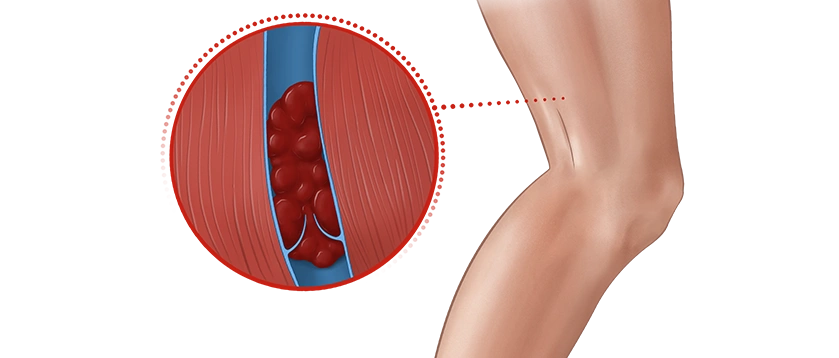
Deep Vein Thrombosis
Deep vein thrombosis (DVT) is the most common type of venous thromboembolism (VTE), a blood clot that forms in a vein. As many as 600,000 VTE events occur each year in the United States. DVT, a blood clot that typically forms in a deep vein in the leg, can lead to serious health complications, such as pulmonary embolism.
More About This Condition
DVT is a blood clot that partially or completely blocks blood flow through a vein deep in the body, particularly the lower leg, thigh, or pelvis. DVT puts people at a higher risk of a pulmonary embolism because clot can break free from its original location, travel through the bloodstream, and lodge in a blood vessel in the lungs.
IMPORTANT NOTE: This overview is provided for informational purposes only and should not be used as a substitute for talking with your doctor. Be sure to talk with your doctor for a complete discussion of this condition as well as the benefits and risks of any treatment options.
Symptoms
DVT commonly occurs in just one leg or one arm. Only about half the people who have DVT experience symptoms. When present, symptoms may include:
- Swelling of the leg or arm (sometimes suddenly)
- Pain or tenderness in the leg that may only be present when standing or walking
- Feeling of increased warmth in the area of the leg or arm that is swollen or that hurts
- Redness or discoloration of the skin
- Enlargement of the superficial veins (just below the skin) in the affected leg or arm
Diagnosis
Your doctor may:
- Ask you or a family member about your risk factors, such as high blood pressure, smoking, heart disease, and a personal or family history of blood clots.
- Ask about your signs and symptoms and when they began.
- Conduct a physical examination.
Your doctor may order one or more of the following tests:
- D-dimer test measures a substance in the blood that is released when clot breaks up.
- Compression ultrasound uses sound waves to create pictures of blood flowing in your veins.
- Magnetic resonance venography uses a specialized magnet to take images of your veins.
Treatment
Treatment for this condition must always be discussed with your doctor for a full discussion of options, risks, benefits, and other information.
- Oral anticoagulants, also known as blood thinners, are the standard treatment for DVT. These may prevent new clots from forming by reducing your body’s ability to clot. However, you may still feel the symptoms due to existing clot.
- Endovascular intervention is another option, one that may help prevent post-thrombotic syndrome (chronic leg pain and swelling). Treatment consists of either an injection of a clot-busting drug or mechanical thrombectomy, a minimally invasive procedure that physically removes clot from blocked arteries. The two can be used in combination.Now, physicians can use computer-aided thrombectomy, which is designed to address blood loss concerns for efficient clot removal across multiple disease states including clots in deep veins.
